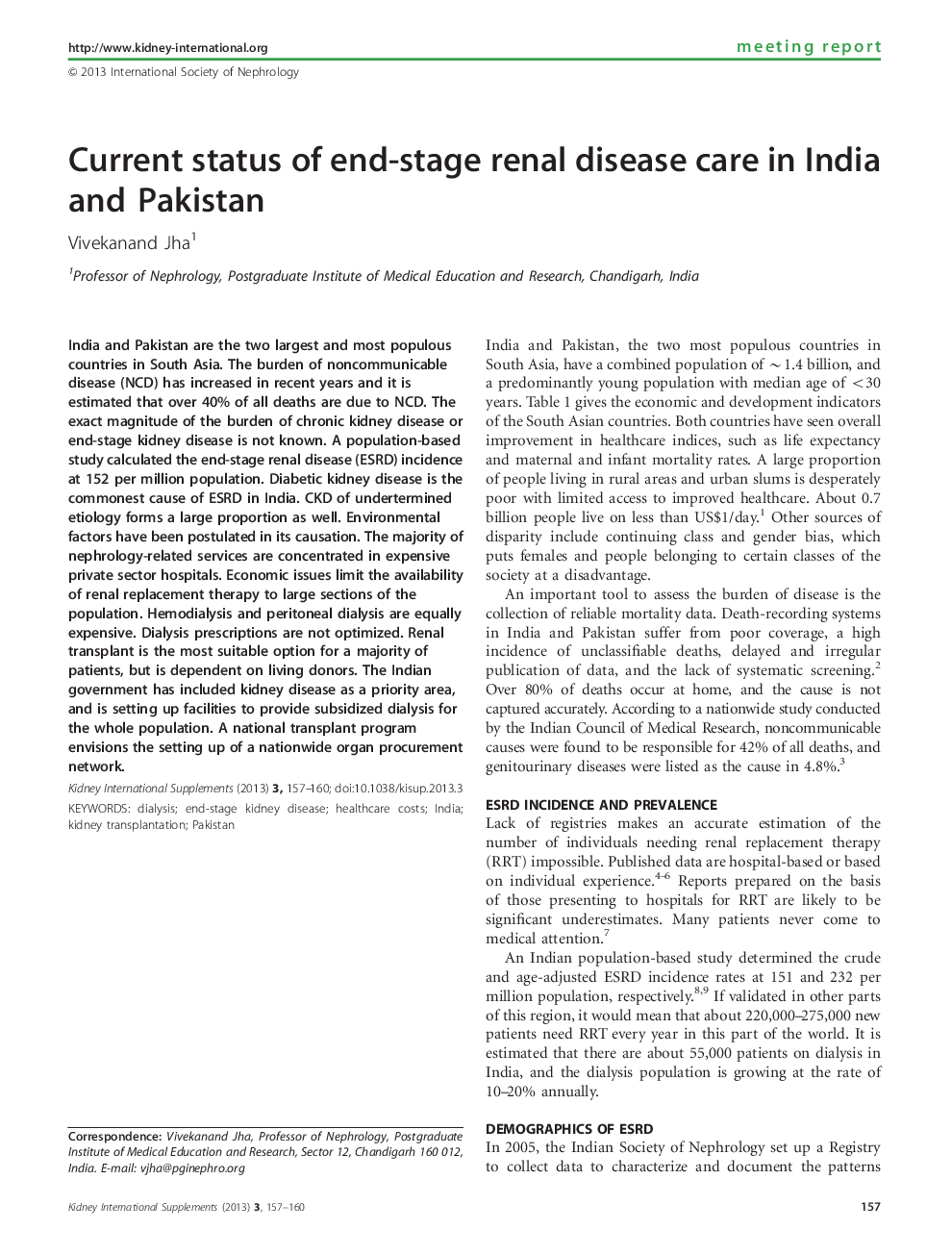| Article ID | Journal | Published Year | Pages | File Type |
|---|---|---|---|---|
| 3890606 | Kidney International Supplements | 2013 | 4 Pages |
Abstract
India and Pakistan are the two largest and most populous countries in South Asia. The burden of noncommunicable disease (NCD) has increased in recent years and it is estimated that over 40% of all deaths are due to NCD. The exact magnitude of the burden of chronic kidney disease or end-stage kidney disease is not known. A population-based study calculated the end-stage renal disease (ESRD) incidence at 152 per million population. Diabetic kidney disease is the commonest cause of ESRD in India. CKD of undertermined etiology forms a large proportion as well. Environmental factors have been postulated in its causation. The majority of nephrology-related services are concentrated in expensive private sector hospitals. Economic issues limit the availability of renal replacement therapy to large sections of the population. Hemodialysis and peritoneal dialysis are equally expensive. Dialysis prescriptions are not optimized. Renal transplant is the most suitable option for a majority of patients, but is dependent on living donors. The Indian government has included kidney disease as a priority area, and is setting up facilities to provide subsidized dialysis for the whole population. A national transplant program envisions the setting up of a nationwide organ procurement network.
Related Topics
Health Sciences
Medicine and Dentistry
Nephrology
Authors
Vivekanand Jha,
